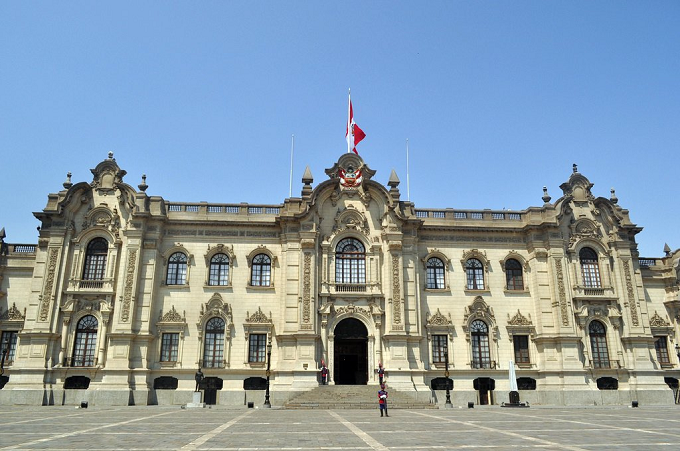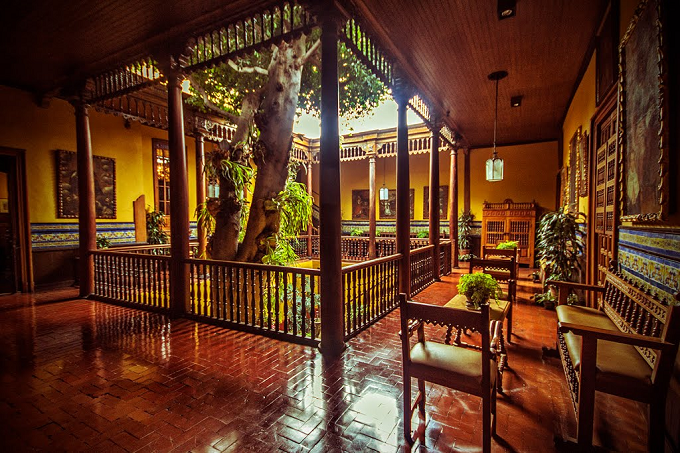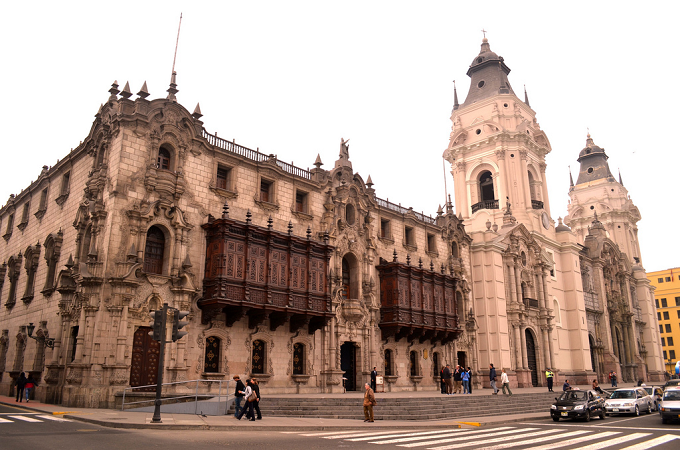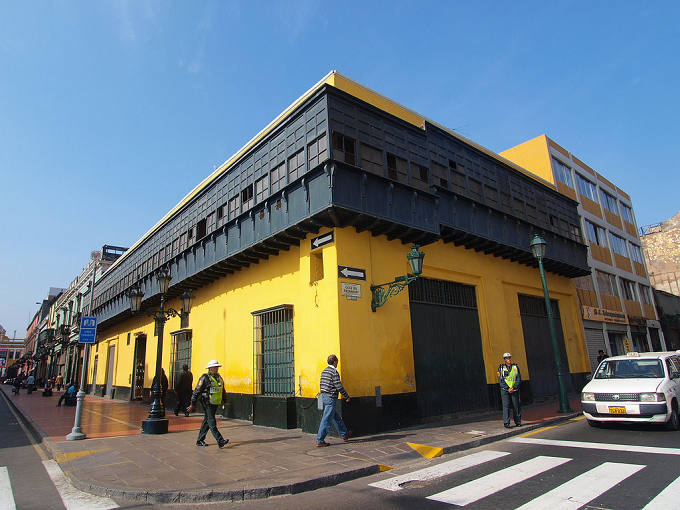When it comes to the colonial and republican side of Lima, you can not miss the different houses and palaces located in the center of the city, also known as “Cercado de Lima”. For nearly 400 years, the main city of the Spanish Kingdom in Latin America, has left us a unique and valuable historical architectural legacy. So if you’re doing tourism in Lima, we invite you to visit the colonial and historic side of the Peruvian capital.
Government Palace. Built on the palace of Taulichusco, last curaca of the valley of Lima, which was initially called the House of Pizarro, was a simple construction that was inhabited by the Conqueror, and since its beginnings faced a series of events that surrounded it with mysteries and legends. Nowadays, nothing remains of the original building of the Viceregal Palace, except a fig tree planted by Pizarro himself. In 1921, after the fire that destroyed the front of the palace, President Leguia ordered its reconstruction, which Ricardo de Jaxa Malachowski, the architect, executed in 1937.
Located in the main square, the Government Palace combines different architectural styles, being its main facade of neo-Baroque style, while its lateral facade is a neo-colonial style. Its lavish interior has beautiful ceremonial halls, such as the Golden Hall, the Tupac Amaru Hall or Basadre Hall.
To visit the Government Palace it’s necessary to register previously by telephone or through the Headquarters of tourism of the Government Palace (it is required to carry an ID card or passport during the visit). The visiting hours are on Saturdays at 10:00 a.m. and the admission is free. The address is Jirón de la Unión s/n, Block 1. Phone: 311-3900, Extension 523.
Aliaga House. Built on a pre-Hispanic huaca and occupied since 1535 by the descendants of Don Jerónimo de Aliaga, the house is adjacent of the Government Palace – House of Pizarro – which says a lot about the proximity of this Segovia conqueror with the founder of Lima, Francisco Pizarro.
There have been seventeen generations in the five centuries that has passed since it was built this colonial mansion of magnificent interiors. This reference can give you an idea of the luxury they lived in those early years of the colony.Declared Cultural Heritage in 1972, you can visit the 18 environments of the Aliaga house – its Golden Hall, the Hall of the Tiles, the Chapel, probably the oldest in Lima.
The visiting times of the Aliaga House are from Monday to Sunday from 9:30 am to 5:00 pm and the cost of the entrance is S/.30.00 (US$ 11). The address is Jiron de la Union 224 and the entry is a previous appointment (call 427-7736 or send an email to reservas@casadealiaga.com)
Archbishop’s Palace of Lima. Of neo-colonial style, the Archbishop’s Palace of Lima has a centennial cultural heritage, from colonials religious-themed works to the jealousy guarded cranium of Santo Toribio de Mogrovejo, one of the five Peruvian saints. Also, you will find an excellent collection of paintings, sculptures and religious ornaments, many of which belonged to other temples of the city.
Originally, the clerical space was nothing more than a small and simple building but this would change over time to become a real and valuable place characterized by its sumptuousness. Built shortly after the foundation of Lima, it is most characteristic of the building its two large balconies made of cedar wood.
The visiting times of the Archbishop’s Palace of Lima are Monday to Saturday from 09:00 am to 5:00 pm. The the entrance has a cost of: General S/.20.00 (US$ 7.22) and Integral S/.30.00 (US$10.83), which includes a visit to the Cathedral of Lima. Children under 13 years old, accompanied by an adult don’t pay. The Integral ticket can be obtained at the Museum of the Cathedral of Lima. Located on Jiron Carabaya block 2, and the phone is 427-5790.
Casa del Oidor. Of all civilian buildings surrounding the Plaza Mayor of Lima, the “Casa del Oidor”, built at the end of the 16th century, is the oldest. Ordered to be built by the Treasurer of the Crown, Alonso de Riquelme, this was the place where the judges appointed by the King administered justice, listening to the complaints of the people. The house, located at the corner of the Junín and Carabaya, is one of the few that still preserved its original architecture, being the corner balcony of unmistakable colonial style, its main distinction. Since 1974 the Casa del Oidor is cultural heritage but, unfortunately, it is not open to the public.
To visit these mansions and palaces, located in downtown Lima, you can grab a taxi from our hotel Tierra Viva Miraflores Larco. Book now and enjoy the beauty of the colonial and republican Lima. If you have any questions regarding this stroll, please ask for our help in the front desk.











